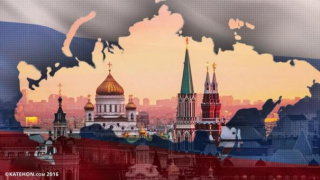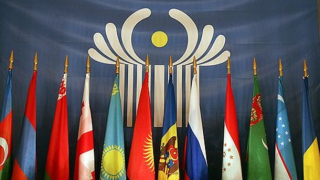Russia’s Energy Geopolitics With China & India
The RIC Core Of The Global Systemic Transition
China and India are Russia’s top two partners in the world, with whom it closely cooperates bilaterally as well as multilateral via BRICS and the SCO. Collectively referred to as RIC, they’re the leading forces in the global systemic transition to multipolarity. All three envisage reforming International Relations so that they’re more democratic, equal, and just, with a large step in that direction being accomplished through China and India’s mutually beneficial energy cooperation with Russia.
The Role Of Energy Geopolitics In The New Cold War
Before detailing the dynamics of Russia’s energy relations with both of them, it’s important to quickly point out how this helps advance multipolarity in the first place. Simply put, ensuring those Asian Great Powers’ energy security establishes a solid economic base upon which to further accelerate their development. This in turn stabilizes their societies, averts externally driven divide-and-rule plots, and makes them more powerful forces to be reckoned with across the Global South.
It's in those countries that comprise the majority of humanity that the New Cold War is expected to be most fiercely waged by proxy. This worldwide competition is between the US-led West’s Golden Billion and the jointly BRICS- and SCO-led Global South (or Global Majority as Russian scholars have recently started describing it as) over the direction of the global systemic transition. The first-mentioned wants to retain unipolarity while the second is actively working to build a multipolar future.
The Russian-Chinese Energy Axis
Having explained the grand strategic context in which Russia’s energy geopolitics with China and India are unfolding, it’s now time to detail each of these two axes. Beginning with the Russian-Chinese one, Tuesday’s energy business forum saw some important information shared about their ties. Rosneft CEO Igor Sechin revealed that Russia is now China’s top oil supplier after providing 7% of its imports and expects LNG deliveries to become equal to pipeline supplies in the coming future.
Russian Deputy Prime Minister Alexander Novak reaffirmed their close cooperation on the energy industry and suggested that the joint development and production of equipment could become the next phase in this respect. He also revealed that they’re developing a system of settlements for bypassing SWIFT and conducting trade in national currencies. Finally, a statement was read from Chinese President Xi about his country’s intent to further strengthen its energy ties with Russia, especially on renewables.
The Russian-Indian Energy Axis
Moving along to the Russian-Indian energy axis, that South Asian state’s imports of its partner’s oil surged by over 50 times since the start of Moscow’s special operation. US financial market firm Refinitiv’s latest data, which by coincidence was released around the same time as this week’s Russian-Chinese energy business forum, showed that India purchased 40% of Russian Urals-grade oil, thus making it Moscow’s largest importer of this resource and Delhi’s top energy partner at 22% of its total.
While the data also showed that China imported 1.82 million bpd in October compared to India’s peak of 935,556, it also revealed that the first only accounted for 5% of Urals sea exports in November, though experts expect that some tankers going elsewhere will later change their destination for the People’s Republic. In any case, the significance of the aforesaid data is that China is Russia’s top energy partner, but the vast majority of its imports are via pipelines while India’s are seaborne.
Comparing & Contrasting
This observation provides clarity to recent reports that some Chinese buyers allegedly paused their import of Russian oil ahead of the West’s looming price cap that’ll enter into effect on 5 December. While this could arguably be interpreted as a tacit “goodwill gesture” by the People’s Republic towards its American rival for facilitating their ongoing discussions on a New Détente, it’s a largely superficial one since the bulk of such Russian oil imports occur via pipelines so it won’t significantly affect bilateral ties.
India, meanwhile, proudly rebuffed previously unprecedented pressure upon it from its partners in the Golden Billion to continue comprehensively expanding its mutually beneficial energy cooperation with Russia. In the grand strategic context of the New Cold War, this was a powerful move of multipolar defiance considering Delhi’s desire to balance between both de facto blocs. Without exaggeration, it played an indispensable role in accelerating that country’s rise as a globally significant Great Power.
Chinese Pipeline Purchases vs. Indian Seaborne Purchases
In view of the insight shared thus far in this analysis about the dynamics of Russia’s energy geopolitics with China and India, some emerging trends become apparent. First, China will continue relying mostly on Russian pipelines for receiving that neighboring country’s oil while India will continue relying on seaborne routes. The former is cheaper since it concerns long-term contracts with fixed prices while the second could be a bit more expensive due to their absence, but that shouldn’t be taken for granted.
This brings the analysis along to the second emerging trend and it’s that India’s leading role as Russia’s top seaborne energy importer and its political will in independently ensuring its national interests in spite of foreign pressure imbues it with outsized influence in Moscow’s grand strategic planning. The Kremlin’s disproportionate dependence on energy exports to cushion the blow to its yearly revenue dealt by the West’s sanctions could see Delhi being offered enticing long-term deals too.
The Consequences Of China’s Energy Diversification Strategy
Third, China’s largely superficial “goodwill gesture” towards the US after some of its importers reportedly paused their purchase of Russian oil ahead of the looming price cap could free up more seaborne oil to be purchased by India, thus accelerating the preceding trend. Furthermore, Beijing’s active energy diversification with respect to its recent $60 billion 27-year LNG deal with Qatar could gradually erode Moscow’s position as its leading energy supplier.
That development could be sped up in the event that China resumes its de facto frozen commitment to phase one of the Trump-era trade deal for purchasing $50 billion in US energy exports to either facilitate the New Détente or reward Washington for any potential concessions such as indefinitely delaying arms shipments to Taiwan. That’s not to suggest that President Xi’s pledge to strengthen energy ties with Russia won’t be fulfilled, but just that the impact might not be as expected.
Rather, the point being in the last two paragraphs is that China’s pragmatic energy diversification strategy won’t significantly affect related relations with Russia due to their existing pipeline deals and hoped-for LNG ones like Sechin suggested but could free up even more resources for India to purchase. Moscow would be inclined to extend preferential terms to Delhi in order to reach long-term deals for ensuring budgetary stability while fueling its partner’s rise as a globally significant Great Power.
The fourth trend is thus that Russian-Chinese energy ties will remain stable (even if they gradually change form by transitioning more to LNG and eventually renewables) while Russian-Indian ones will continue growing. The second’s ceiling will only be Russia’s production capacity and India’s continued political willingness to defy Western pressure. These can be rectified through joint investments and pioneering a non-SWIFT de-dollarized payment system like the one between Russia and China.
Russia-India > Russia-China
And finally, the last trend is that the Russian-Indian Strategic Partnership is rapidly replacing the Russian-Chinese one in terms of its significance for Moscow’s grand strategy. That’s not to say that Russian-Chinese ties will deteriorate – not at all! – but just that they’re “normalizing” in the face of Beijing’s struggle to recalibrate its grand strategy due to the global systemic disruptions caused by the Ukrainian Conflict and its ongoing discussions with Washington over a New Détente that are occurring as a result.
These last-mentioned developments aren’t anything negative for Russian-Chinese relations, but they do suggest that the so-called “golden era” of their ties wherein they were (in hindsight inaccurately) presumed to be on the exact same page with one another in all respects has silently ended. They’ll still work closely on reforming International Relations in the multipolar direction via de-dollarization and multilateral fora like BRICS, but they’re increasingly going about things their own way too.
By contrast, Russia and India’s grand strategies have quickly converged since February upon both Great Powers realizing how complementary they’ve always been with respect to their shared vision of breaking through the bi-multipolar impasse of the global systemic transition. Neither wanted to indefinitely perpetuate the Sino-American superpower duopoly that could have otherwise become entrenched in International Relations, hence why they jointly strove to smash it over the past year.
Concluding Thoughts
The top takeaways from this analysis are several. First, Russia’s energy geopolitics with China and India are mutually beneficial. Second, China’s energy diversification strategy is being balanced out by India’s insatiable appetite for discounted Russian resources. Third, India is rapidly replacing China as Russia’s top partner. Fourth, neither the aforesaid nor the ongoing Sino-American discussions over a New Détente are zero-sum for Moscow or Beijing. And finally, a new global strategic balance is emerging.
Source: Andrew Korybko














